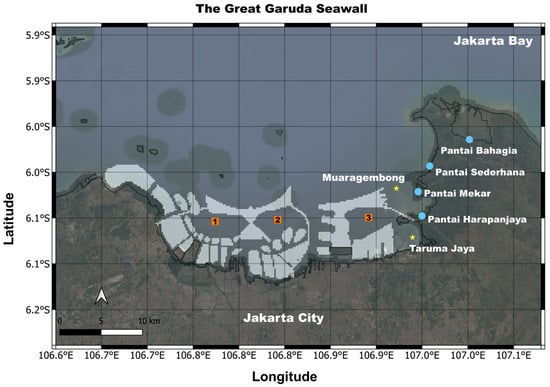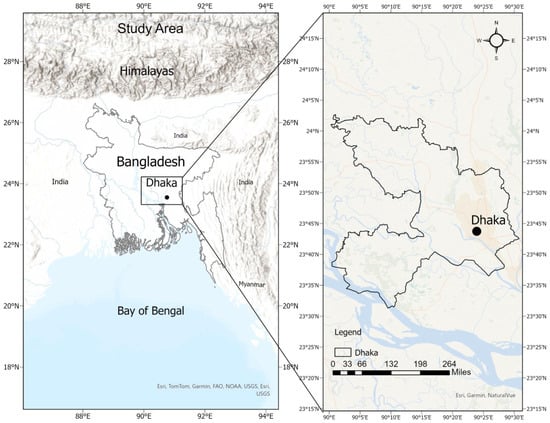- Article
Assessing the Effectiveness of the Great Garuda Seawall (GGSW) as a Coastal Flood Structural Countermeasure in North Jakarta, Indonesia
- Khusna Ainul Mardliyah and
- Kenji Taniguchi
Jakarta frequently experiences flooding due to several sources. To address this, the Indonesian government initiated the Great Garuda Seawall (GGSW), a structural countermeasure to protect the city from floods. This study assesses the effectiveness of the GGSW using a storm surge model. Four events were simulated to evaluate storm surge variations: without the GGSW, and in three construction phases (initial, intermediate, and completion phases). The results derived from the model depict the maximum storm-surge heights near the Jakarta coastline as 10 cm, 12 cm, 14 cm, and 24 cm for the events of Borneo Vortex, Hagibis–Mitag, Peipah, and Cold Surge, respectively. The effects also extended slightly to the Kepulauan Seribu Regency. Among the construction phases, the intermediate phase was identified as the most critical because the eastern reservoir gate remained open. In the completion phase, attention is needed for the gate connection between reclaimed lands and the Jakarta mainland, especially near the Bekasi region, where coastal erosion risk is high. Overall, the GGSW is not yet fully effective in preventing coastal flooding because some areas still experience no reduction in storm surge height. Furthermore, an evaluation based on GGSW construction phases is also important because this project generally involves reclamation islands and water pumps, which must be carefully cross-engineered.
19 December 2025



![Boundaries of the National Park and its socio-economic influence area. Source: own elaboration based on the National Parks Autonomous Agency (Organismo Autónomo Parques Nacionales, OAPN) [14].](https://mdpi-res.com/geographies/geographies-05-00078/article_deploy/html/images/geographies-05-00078-g001-550.jpg)


